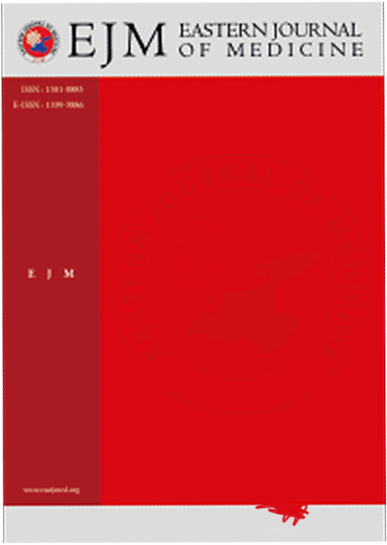Analysis of Mortality-Associated Risk Factors in Patients With Community Acquired Pneumonia: A Retrospective Data From University Hospital
Buket Mermit1, Şaban Incecik21Department of Chest Diseases, Van Yuzuncu Yıl University, Faculy of Medicine, Van, Turkey2Department of Infectious Deseases and Clinical Microbiology, Van Yuzuncu Yıl University, Faculy of Medicine, Van, Turkey
INTRODUCTION: To analyze and determine the mortality-associated risk factors in patients hospitalized due to the Community Acquired Pneumonia (CAP).
METHODS: The data of patients with CAP were retrieved from hospitals database. The age, gender, smoking status, mortality rate, co-morbidities, laboratory results (WBC, CRP, Procalcitonin, urea, creatinine, lymphocyte, Hb and Htc levels), clinical parameters including respiratory rate, PSI score, CURB-65 score, intensive care unit hospitalization, pO2 levels, fever, blood pressure and presence of pleural effusion were recorded from hospitals patient data system.
RESULTS: In total, 47 cases of CAP were retrospectively evaluated. The mean age of patients were 66.05±14.3 years (range, 35-87). The gender was being 17 females and 30 males. The mortality rate was 9/47 (19.1%). The mean CURB-65 score, WBC and CRP, was 1.2±1.1, 11.67±7.89 and 121.2±52.2, respectively. The non-survivors were found to have statistically significantly decreased level of Sa02, blood pressure level (both systolic and diastolic), lymphocyte count. The survivors were found to have younger age, lower procalcitonin positivity and lower need for invasive mechanical ventilation (p<0.05). The logistic regression analysis showed that the mortality-associated risk factors are need for mechanical ventilation, presence of pleural effusion, older age and procalcitonin positivity.
DISCUSSION AND CONCLUSION: CAP is related with in-hospital mortality and several factors like requirement of invasive ventilation, procalcitonin positivity and older age should be kept in mind for mortality.
Manuscript Language: English














